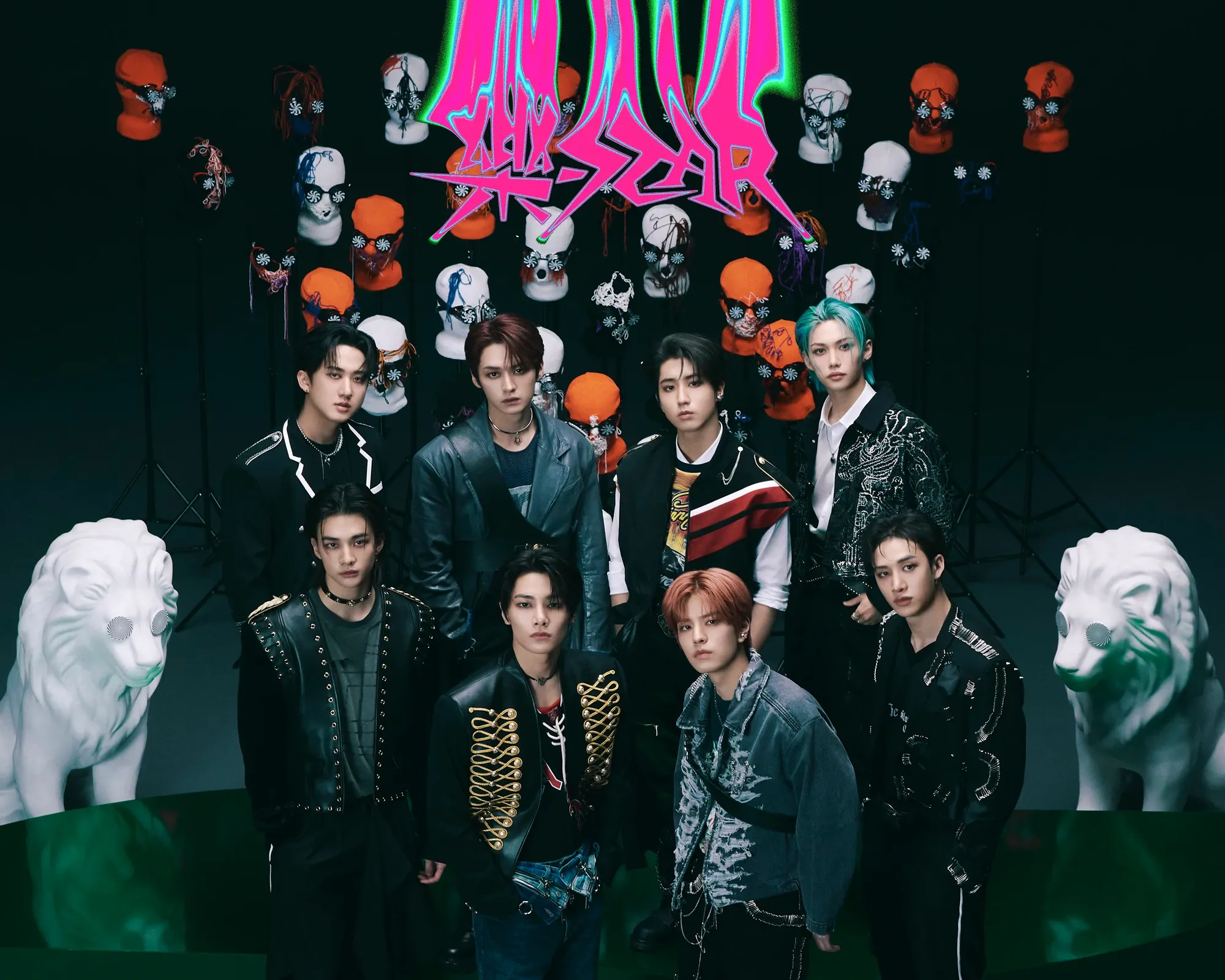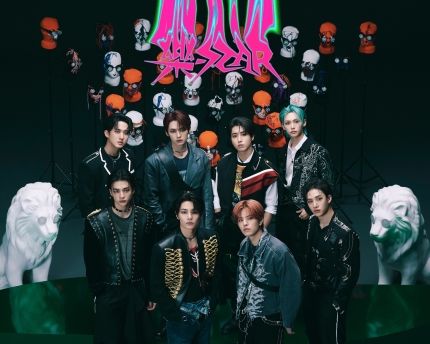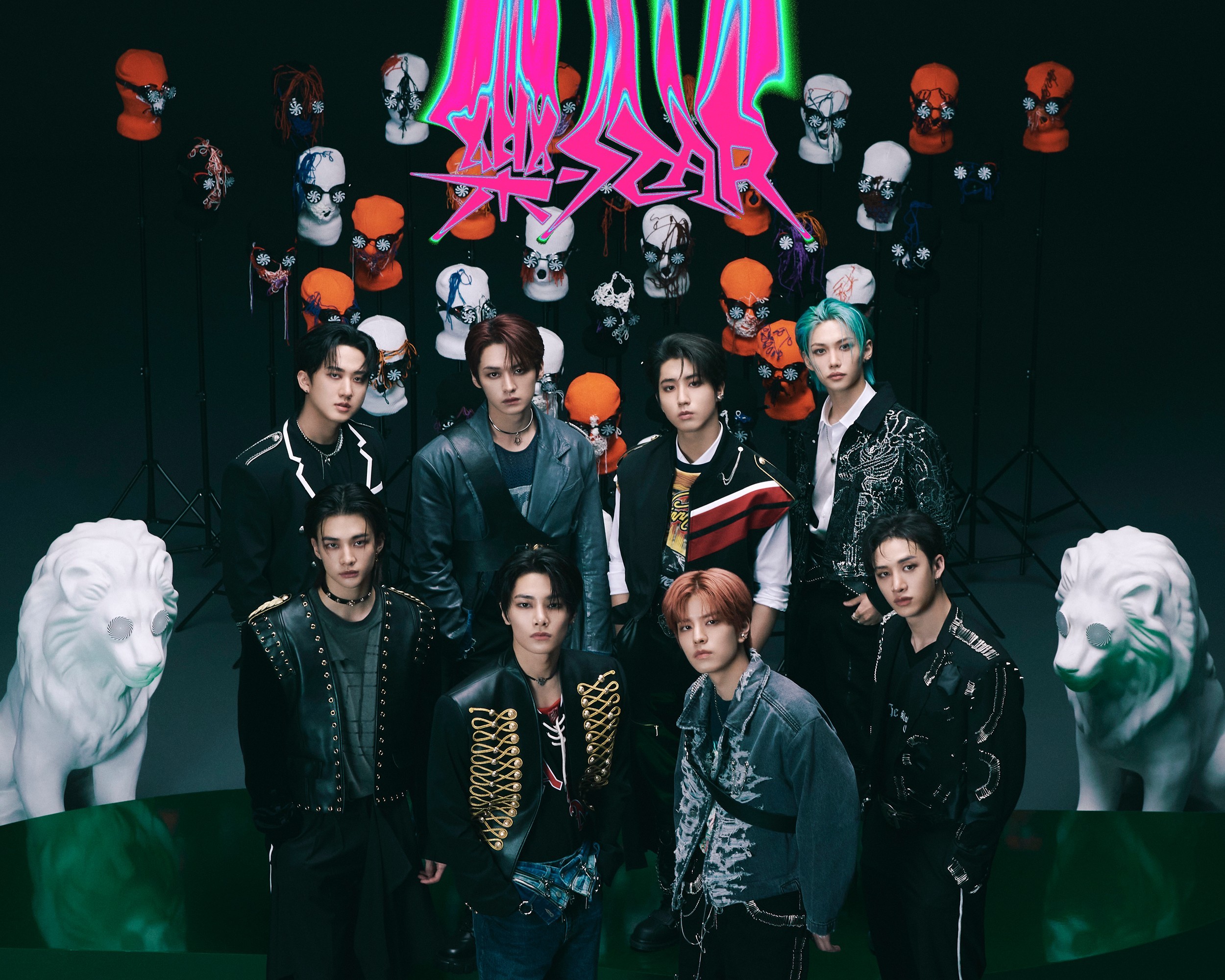Stray Kids are a K-pop rock stars who really know how to have fun.
Stray Kids are on a roll.



Stray Kids are on a roll. They are the ones behind the best-selling K-pop album in the U.S. in 2023, "★★★★★ (5-STAR)" with initial sales of 4.61 million copies, the second artist after Taylor Swift to have four consecutive albums on the Billboard 200 chart, the first K-pop headliner at Lollapalooza Paris, and the first boy group after BTS to enter the Billboard Hot 100 chart at No. 90... Since the release of "Maniac" in 2022, Stray Kids have made a name for themselves in the global market. They are now confidently taking on even greater achievements and stages as a leading K-pop artist. Their growth is unstoppable.
Ironically, it's South Korea that needs the most introduction to Stray Kids. To put it bluntly, unless you're a member of Stray Kids' dedicated fandom (STAY), the vast majority of people are unfamiliar with the group and its music. They only recognize the name through jaw-dropping record sales, performance on the U.S. Billboard charts, and "numbers" like views on social media content. Even though it's been a while since we've heard about chart entry, Lollapalooza headliners, and Billboard Music Awards wins, we're still often asked basic questions about who they are and why they're so popular rather than the present and future of Stray Kids. While many K-pop boy groups have struggled to connect with the public in recent years, seeing a group like Stray Kids with such a disproportionate amount of global and Korean recognition is unique. This stems from the irony that while Stray Kids proves to be a unique group, they are simultaneously the most faithful to the concept of K-pop as perceived by the global market.
Kpop has a lot of fun rock (樂/락) aspects. First of all, it is fun just to watch the members, who glow with their mere existence, showcasing their gorgeous looks, outstanding vocals, tireless physical strength, and dancing. Another important aspect is the three-dimensional and intriguing worldview that is reminiscent of feature novels, cartoons, anime, and games, and the excitement of consumption that creates various narratives by watching them perform their roles. The time of nurturing and growth is the key to building a fanbase as they go from the smallest stage, looking into each other's eyes and breathing together, to global stardom as they gain skills and experience. K-pop thrives on customer satisfaction by providing its supporters with various indefinable pleasures. While the members who debuted as trainees undergo endless training to become well-rounded entertainers, the producers work around the clock to quickly absorb various musical genres and styles from pop culture to create unique songs, music videos, and performances.
All of these delights are present in today's Stray Kids. K-pop, with its many vertices and faces like a regular polyhedron, is compressed into a hard, smooth bullet in Stray Kids' magazine. Fired with explosive force, the bullet travels at high velocity and penetrates the hearts of fans without any resistance. The music, the performance, the worldview, the coming-of-age narrative, and the direction are all aligned toward the most essential and comprehensive experience of K-pop today.
When the album "5-STAR" topped the Billboard 200 chart, I described Stray Kids as a K-pop blockbuster. Deep scripts and experimental directing don't matter when it comes to big-budget blockbusters, pull-out-all-the-stops movies that overwhelm audiences and provide instant excitement. Loose narrative, spectacular cinematography, and the pleasure of a single memorable dramatic scene are the priorities. It's no coincidence that the music video for "S-CLASS" creates a "Suicide Squad"-like creature and depicts a scene from "Attack on Titan" and "The Dark Knight" with "LALALALA," where the four emotions of happiness and sadness battle it out. From "MEGAVERSE," which opens the door to the "樂-STAR" album, Stray Kids never hide their blockbuster ambitions. Centering on the husky voice of Felix, which has become the group's symbol, the song announces a dramatic new beginning through a sharp tempo change. It's not a three-dimensional parallel universe multiverse, but a gigantic world that goes beyond that. This is K-pop on a 'grand' and 'megaton' scale.
"Mara-flavored" is a phrase fans have used in the past to describe Stray Kids' music. It's a mix of pouring rap over eardrum-pounding beats, mind-numbing choreography, and assertive vocals that are both controlled and highlighted. The kitsch of witty language play and conceptual twists is also a Stray Kids specialty. The title track, "LALALALA(樂)," utilizes phonk and Afrobeats in the recent hip-hop style and starts with a blow to those who think of band music with harsh electric guitars, lively drums, and thumping bass just by looking at the title. After ChangBin's wild rap rhyming "Heaven (극락)," "Thunderbolt (날벼락)," "City's rock(도시의 락)," and "Having fun is all it matter (즐기면 그만)", HyunJin, I.N, Han, BangChan, LeeKnow, and SeungMin provide a sharp contrast with their high-pitched vocals. Unlike the K-pop musical "S-CLASS," which incorporates a variety of beats, this song is more aggressive, as it keeps the tension high and pushes forward without letting up. Of course, they didn't forget to include a rock version of the song on the album for fans who expected genre music.
How about a performance to complete the music? Stray Kids starts with free and fluid movements followed by witty point choreography and, at the peak of excitement, a group dance that corners the viewer. The chorus movements that emphasized arm and hand movements while restraining the movements of other body parts were the highlights of "Maniac," "Case 143," and "S-CLASS" as the powerful parts flow throughout. Armed with a more aggressive attitude and a faster tempo, "LALALALA" added dynamic energy with a short introduction followed by a powerful step. As evidenced by their performance at the Billboard Music Awards, this stage configuration shines even brighter in a group dance with backup dancers.
The unique music and the stages that bring it to life are great on their own. But the real reason why fans are so passionate about Stray Kids is more about the process than the result. Drawing up the blueprints for Stray Kids is the production unit (3RACHA), consisting of Bangchan, Changbin, and Han. Having built a career based on active amateur activities before their debut, 3RACHA established the group's image with the youthful self-exploration "I AM" and the coming-of-age series "Clé," which unraveled the mystery of identity, and perfected their now widely recognized style with the "Life(生)" series, which depicted life in a harsh reality. Based on rich musical nourishment such as hip-hop, rock, electronic, and ballads, Stray Kids creates colorful music that is not like anyone else through production that accurately understands the members' voices and places them in the right place. "Blind Spot," which conveys hope with a powerful message, "COMFLEX," which stands out for its witty rap, and the lyrical "Cover Me" and "Leave" converge into one without any sense of heterogeneity, utilizing the members' individuality even in different genres and styles. Not many teams can boast of such a seamless and unified seam between the visuals and auditory elements of their music as Stray Kids.
After over 30 years of slicing and dicing K-pop, South Korea dreams of evolving and innovating by sharpening one of its many appealing features. Big concepts, saturated imagery, and content that strives to reach a glamorous or non-existent utopia are widely loved. On the other hand, international fans who are just getting into K-pop, starting with superstars like BTS and BLACKPINK, are more interested in a group that can convince them of this complex, large-scale, and comprehensive cultural content. In addition, they prefer to "fangirl" by sharing their thoughts, voices, and personal narratives that they can relate to rather than well-polished projects.
The result is Stray Kids. They communicate with the energy of youth and effortless pleasure. Their rough-and-tumble format indeed makes it difficult to get started. But once you've gotten into the groove of their self-produced charms, which are based on relatable youthful emotions, it's just a matter of immersing yourself in the essence of K-pop. Amidst all the fun, there's a message. Stray Kids "MEGAVERSE" is a world where the misfits become the cool leaders, and the oddballs shine because they're special. Breaking through the static and negativity, Stray Kids runs today for eternal fun.
Translate : Syrup & Rawan

![[미국에서 만드는 K팝] 하이브 아메리카 (HYBE AMERICA)](/content/images/size/w720/2025/12/katseye-2025-mtv-video-music-awards-billboard-1800.webp)
![[HYBE America] #3 이혜진 GM(General Manager)](/content/images/size/w720/2025/12/Screenshot-2025-12-28-at-23.43.34.png)
![[HYBE AMERICA] #2 인정현 Head of Creative Production](/content/images/size/w720/2025/12/Screenshot-2025-12-28-at-23.43.07.png)
Comments ()